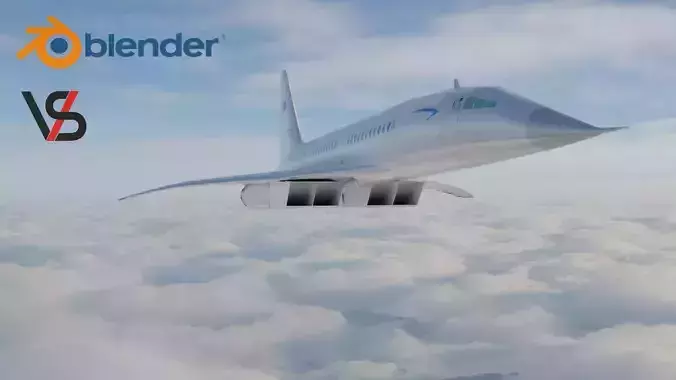1/9
The Tupolev Tu-144 (in Russian: Typolev TU-144, codenamed NATO: To charge) is a supersonic airliner quadreactor developed in the USSR by the Tupolev design office. With the Franco-British Concorde, they are the only supersonic civilian aircraft to have reached production. Intended for use on the lines of the company Aeroflot, it can carry, with a speed superior to Mach 2 and with an altitude of 20 000 m (65 500 ft), from 98 to 120 passengers over a distance of 3 080 to 6 200 km depending on the version.
The prototype of the Tupolev Tu-144 flies for the first time on December 31, 1968, becoming the first supersonic airliner, and passes the sound barrier on June 5, 1969. In 1973, an accident of a production device delays the development of the program and it is in December 1975 that the production equipment comes into service, initially as cargo and postal planes. In November 1977, a first line from Moscow to Alma-Ata (Kazakhstan) was opened to passengers. A second aircraft experienced an accident in May 1978 during a test flight which resulted in the withdrawal of passenger service. However, it remained active as a cargo transport aircraft until 1983. One of the aircraft was reinstated in 1996 as part of a program between Tupolev and NASA, and was permanently withdrawn in 1999.
The Tupolev Tu-144 is built in three versions, Tu-144, Tu-144S and Tu-144D. The first is only a prototype and only one device is built. The other two are the production versions which differ mainly by their motorization: the Tu-144S uses Kouznetsov NK-144A turbojets after-combustion while the Tu-144D is equipped with Kolesov RD-36-51 without afterburner, less fuel-hungry and more efficient. The Tu-144D used by NASA is deeply modified; it receives engines Kouznetsov NK-32 double flow and afterburner and is redesign Tu-144LL.
The production ends in 1985 with a total of 16 devices built, a prototype, ten Tu-144S and five Tu-144D.
REVIEWS & COMMENTS
accuracy, and usability.









